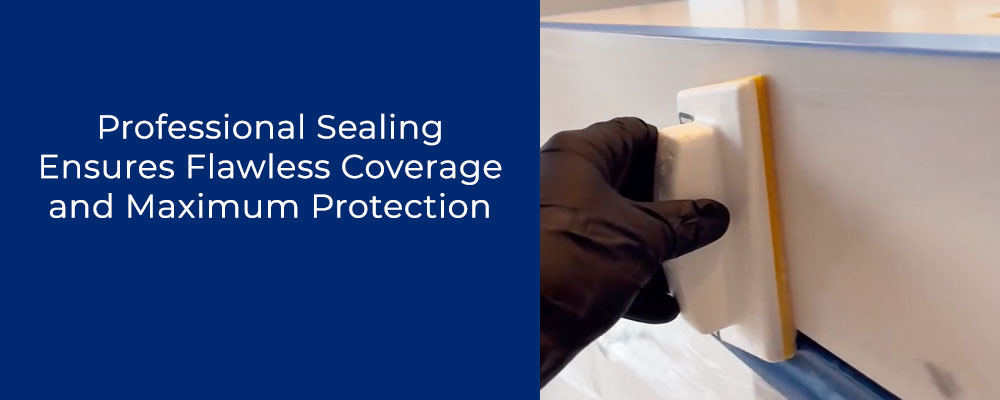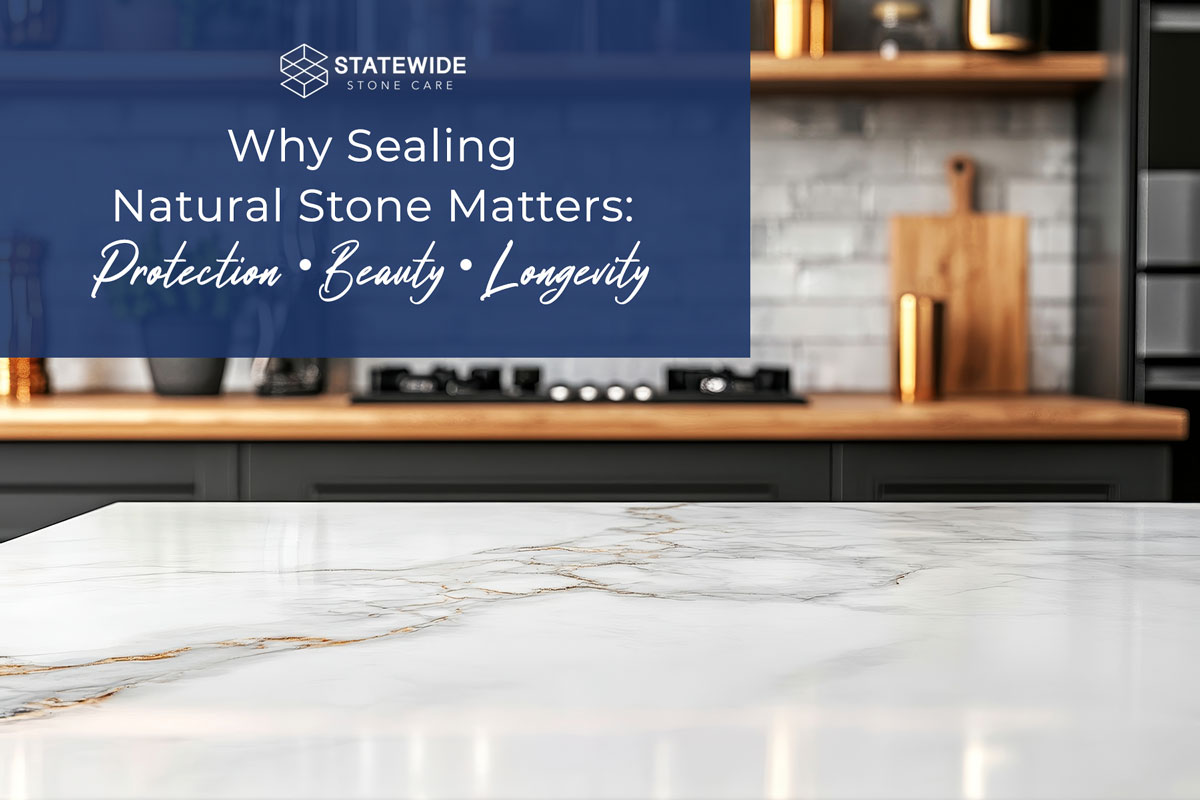Natural stone is a popular choice for fireplaces, countertops, flooring, and other surfaces thanks to its timeless beauty and impressive durability. With a variety of options available—such as marble, limestone, travertine, slate tile, and granite—homeowners can choose the type that best fits their style and needs. Each type of stone has unique characteristics, but most share one key trait: they are porous. This means they can absorb liquids, which may lead to staining or bacteria buildup if not properly maintained.
To help protect natural stone surfaces, sealing is recommended. The good news is that sealing is a simple and affordable maintenance step that doesn’t need to be done often—usually just once a year or even less, depending on the product used. Many sealers offer long-lasting protection, making it an easy way to preserve the look and longevity of natural stone surfaces.
Understanding Stone Porosity
The porosity of your natural stone plays a key role in how often it needs to be sealed. To determine how porous your stone is, try a simple water test: place a few drops of water on the surface and observe how long it takes to absorb. If the water soaks in quickly, the stone is highly porous. If it remains on the surface for a while, the stone has lower porosity and requires less frequent sealing.
Stones like marble, onyx, and limestone are among the most porous and can stain easily if left unsealed. To maintain their appearance, sealing every six months is recommended. For those seeking a lower-maintenance option, granite and quartz are excellent choices. These stones are more resistant to moisture, easy to clean with mild soap and water, and typically only need to be sealed once a year.
Three Common Types of Sealants for Natural Stone
Many new stone countertops and backsplashes come pre-sealed, reducing the need for immediate treatment. Over time, however, resealing helps protect the stone’s appearance and prevent stains. In some cases, stones are treated with resins during manufacturing, which act as built-in sealants and may not require additional sealing. If your stone does need protection, there are three main types of sealants to consider:
Surface Sealant: Also known as a strippable coating, this water-based sealant is applied to the top layer of the stone and can be removed easily if needed. It often contains polymers like acrylic and is commonly used for tile and stone surfaces. Be sure to choose a product specifically designed for natural stone. While surface sealants are easy to apply and remove, they do require more frequent reapplication.
Penetrating Sealant: Known as a permanent coating, this type of sealant uses solvent-based polymers that penetrate below the surface of the stone. It offers longer-lasting protection than surface sealants but is more difficult to remove once applied.
Impregnating Sealant: This solvent-based option is typically applied by professionals. It penetrates deeply into the stone without changing its appearance and is highly resistant to UV exposure, making it ideal for outdoor use. Although the initial application requires professional expertise, impregnating sealants offer long-lasting protection that can endure for several years.
Benefits of Sealing Natural Stone
Sealing natural stone is a simple yet highly effective way to extend its life and preserve its natural beauty. Whether used indoors or outdoors, applying a sealant provides a range of valuable benefits:
Stain Protection: Natural stone is porous, meaning it can absorb spills and develop stains over time. A quality sealant acts as a barrier, helping to prevent substances like wine, oil, and other liquids from seeping into the surface.
Acid and Chemical Resistance: Sealing helps protect your stone from acid erosion caused by common household cleaners or acidic foods, which can dull the finish or etch the surface—especially on sensitive stones like marble or limestone.
Bacteria and Mold Prevention: In kitchens and bathrooms, moisture can lead to the growth of bacteria or mold in unsealed stone. A sealant reduces porosity, making the surface less hospitable to microbial growth and easier to clean.
Weather and Salt Resistance: For outdoor applications, sealing helps shield stone from frost damage and salt exposure—two common culprits in cracking or surface wear during colder months.
Enhanced Safety: On floors, some sealants add a layer of slip resistance, which can help reduce the risk of slips and falls—especially in areas prone to moisture like entryways, kitchens, or pool surrounds.
Regular sealing not only protects your investment but also enhances the appearance of your stone, keeping it looking vibrant and clean. For those considering sealing outdoor surfaces like patios, check out our related article on the pros and cons of sealing pavers for more targeted advice.
Why Professional Sealing Is Worth It

While some sealants are available for DIY application, having your natural stone sealed by Statewide Stone Care, a professional company that services NYC, NJ, and CT areas can make a significant difference in both performance and longevity. Professionals are trained to select the right type of sealant for your specific stone and its location—whether it’s an indoor kitchen countertop or an outdoor patio. They ensure proper preparation, even application, and full coverage, which helps maximize protection. Professional-grade sealants also tend to last longer and offer stronger resistance to wear, stains, and environmental factors. Investing in professional sealing gives you peace of mind knowing your natural stone is protected and looking its best for years to come.




